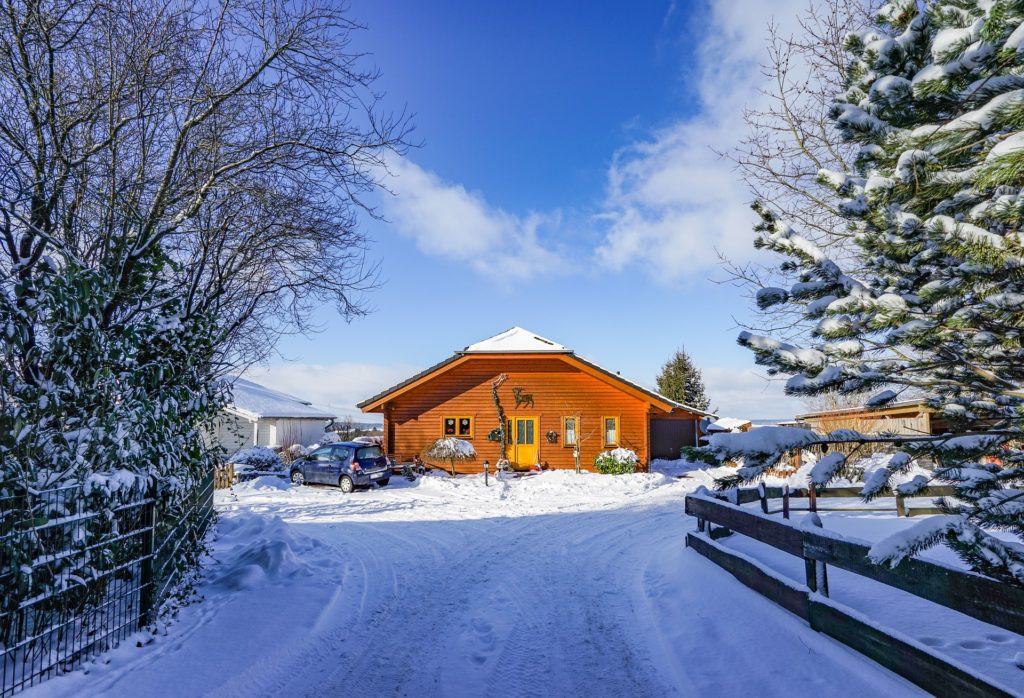As the winter months approach, it is important to get your home ready for the colder days ahead. You will want your house to be comfortable while saving energy. This will help keep your monthly utility bills low. Use the following tips to get your home winter ready in the most efficient ways possible.
Taking Care of Drafty Windows
Older windows allow hot air to escape as well as let the cold air inside. You can fight drafty windows by covering them with plastic. Use a clear, heavy duty plastic sheet attached to a frame that you can affix over the entire window. Or you can apply plastic sheeting directly to the window. As long as it is tightly sealed, it will reduce drafts.
The best option would be to install new, energy efficient windows during your NJ home remodeling projects. Modern double, or even triple pane, windows provide an effective barrier between the interior of your home and the frigid air outside.
Whether your windows are new or not, there are certain types of window treatments that will keep your home warmer. Look for insulated drapes that can be closed during the night. There are also many varieties of window shades that will add an additional layer of protection to the glass.
Adjust the Thermostat
Set your thermostat as low as you can while still feeling comfortable during the day. During the night when you are sleeping, you can turn the thermostat down by 10° to 15°F. Adjusting it to a lower temperature for eight hours a day can save you roughly 10% per year on your heating bill. Talk to your home remodeling contractor about installing a programmable or smart thermostat that will make it easier to turn down the temperature each evening.
Seal all Leaks
Look for leaks that air can escape through while winterizing your home. Places such as around plumbing pipes, recessed lighting, and chimneys often have small gaps that you can seal off in order to keep your home better insulated. Check around doors and windows as well. Use caulk or weather stripping to fill in any cracks that might allow the cold air to come in. Don’t forget about any unfinished spaces behind closets and cupboards. You will want to have these areas insulated and finished off properly.
Heating System Maintenance
Schedule a routine maintenance visit from your heating and cooling system expert. They can inspect your heating unit to make sure it is functioning properly. You may also need to replace furnace filters monthly throughout the colder seasons. If you use a pellet or wood burning heater, clean out the flue vent regularly, and make sure the appliance is thoroughly cleaned periodically to ensure efficiency.
Reducing Heat Loss When Using a Fireplace
If you are not using the fireplace, make sure the damper is closed. Leaving it open is the same as having a window open. When the fireplace is in use, open any dampers found in the bottom of the firebox or open a nearby window by about one inch. Close any doors opening into this area, and drop the thermostat to between 50° and 55°. Some people don’t actually use the fireplace for heat but love the look of it. In these circumstances, you can have the chimney flue plugged and sealed to prevent heat loss.
Lower Water Heating Costs
You can turn your water heater down to the warm setting. This is usually 120°F. It will cost less to keep the water warm, and it will prevent scalding from water that is too hot. If this setting isn’t warm enough to meet your family’s needs, slowly turn it up a little at a time until you find a setting that is ideal. Another great energy efficient option is to install an on demand water heater. This unit will only heat the water you use as you need it. You won’t be paying to keep a full tank of water hot 24 hours a day.
Allow the Sunshine In
While heavy drapes and window blinds are excellent when it comes to keeping the cold air out, you don’t want to miss out on the free heat that the sun provides. Get in the habit of opening all window coverings on any of your south facing windows each morning. The sun that shines in will add heat naturally to your home. Close them again before the sun sets to trap the free heat inside.
Reverse the Ceiling Fans
Those beautiful ceiling fans that you had installed will keep rooms cool in the summer months, but they can also help warm your home’s interior during the winter time. Simply reverse the spin of the blades. When the fan runs in a clockwise direction, it will push the warm air back down into the room. This will also keep pockets of cool air from settling in the corners of a room.
